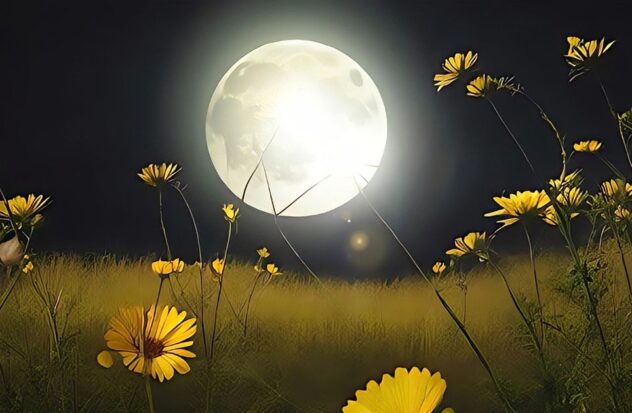MIAMI.- Every end of the month the sky marvels us with the immensity and brightness of our natural satellite. It is the turn of the Full Moon in May, known as the “Flower Moon”, a magical spectacle that will dazzle the sky during the night in the coming hours.
Full moons are a phase of the lunar cycle that occurs every month when the Earth is in a position almost aligned between the Sun and the Moon, a moment that receives various names depending on the month in which it occurs.
For example, in April you could enjoy an astronomical experience thanks to the so-called Pink Moon, while next June will give away the popular Strawberry Moon on the night of the 21st to the 22nd.
When can you see the full Moon in May?
According to the lunar calendar of the National Geographic Institute (IGN), the full moon of the fifth month of the year will reach its maximum splendor, in the constellation of Sagittarius, on the afternoon of this May 23 at 3:53 p.m. (Peninsular time) and will last until night of the next day.
In the United States, its maximum illumination can be seen at 9:53 am on the same Thursday. However, the best view will be on the night of May 22 to 23 and 24 to 25, when the sky will shine fully with its majesty.
During this night, you can also enjoy the view of Antares, a reddish and remarkably bright star, located near the Moon.
Why is it called Flower Moon?
The name given to the full moon that occurs in May comes from the traditions of the Native American tribes, specifically the Algonquins and the Ojibwe, who for centuries named each full moon of the year depending on the season, relating them to important events in nature.
In the northern hemisphere, this full Moon is called the Flower Moon in symbology at the beginning of spring, which marks the season of the rebirth of flowers and the blossoming of meadows and forests.
“Mother’s” Moon or “Milk” Moon
This is not the only name given to the full Moon of the month of May, it is also popularly known as “Mother’s Moon”, considering it a symbol of increased fertility or “Milk Moon”, a name that is linked to a better milk production during this season.
Another name given to this full moon is the “Corn Planting Moon,” to mark the beginning of planting for the next agricultural season. It is also called by other tribes the Sprouting Moon, the Egg-laying Moon, the Frog Moon, and the Sprouting Leaf Moon.
While in the southern hemisphere it is called the “Beaver Moon” or “Frost Moon”, because it is entering the beginning of autumn and ending summer.
The arrival of the fifth Moon of the year also indicates a seasonal change with the approach of the beginning of the summer season that will occur on June 20. In addition, it represents the time of rebirth, growth and the ideal time to harvest crops.
How to see the Flower Moon?
Unlike eclipses, this astronomical event can be observed with the naked eye, so no specialized optical equipment is needed to enjoy it.
This Full Moon can be seen from anywhere in the world, as long as the sky is clear. However, it is advisable to use an astronomical telescope to fully appreciate this celestial event in the night sky.
For an optimal experience, experts recommend finding a location high up, free of light pollution, clear of trees and buildings that may impede viewing.
@Lydr05
Source: With information from El Mundo, National Geographic, Infobae and El Tiempo


